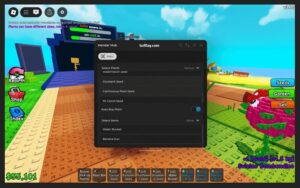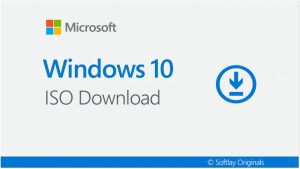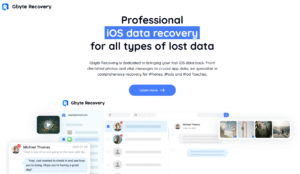WordPad is like Microsoft Word in many ways, but with fewer word processing features. Even if you are familiar with MS Word and regularly use it, you can still have trouble using WordPad app in Windows 10 & 11 PC.
If you are unable to open WordPad or properly close the app. Or you are unable to add headers, footers in the document and change the margins, or you don’t know how to put page numbers in.
This article includes a tutorial on how to open, create, save and print the documents using the built-in free word processor for Windows OS. I will also address some actual issues related to WordPad.
Related: Download WordPad for Windows 7 PC
How To Open WordPad in Windows 11, 10, 8 & 7
Users who are using a version of Microsoft Windows that supports WordPad can run WordPad (wordpad.exe) by following the steps below.
| Windows 11 and 10 | Press the Windows key to open the Start menu. Type wordpad and press Enter. |
| Windows 8 and 8.1 | Press the Windows key to open the Start screen. On the Start screen, type wordpad. In the search results, click the WordPad program. |
| Windows 7 and earlier | Press the Windows key to open the Start menu. Click the Run option. Type wordpad or write, then press Enter. |
Check this out If you need to download WordPad for Windows 7 PC.
How To Use WordPad
WordPad is a basic text-editing app you can use to create and edit files, include text with different fonts and colors, insert pictures, and add links to other files.

Create, open, and save files
You can use WordPad to open and save text files (.txt), rich text files (.rtf), Word documents (.docx), and OpenDocument text files (.odt). Files in other formats will open as plain text files and might not appear as expected. The following table shows the steps to create, open, and save files.
| To | Do this |
|---|---|
| Create a new file | Tap or click File, and then tap or click New. |
| Open a file | Tap or click File, and then tap or click Open. |
| Save a file | Tap or click File, and then tap or click Save. |
| Save a file under a different name or format | Tap or click Save as. |
Warning:
Some features – like headers, footers, and annotations—aren’t supported in WordPad. If you open a file with these features and then save the file in WordPad, you’ll lose the content in these features. If you want to change such a file, but don’t want to lose the original content, tap or click Save as and save the file with a different name. That way, you can make changes to a copy of the file while keeping the content in the original file intact.
Unsupported features:
- Headers and footers
- Footnotes and endnotes
- Glossary document entries
- Annotations, including comments, revisions, and bookmarks
- Mail merge data fields and instructions
- Specific document settings
- Fields
- Document metadata
- DrawingML, MathML, and custom XML content in Office Open XML format text documents
- Chart content, mathematical content, and graphic content in OpenDocument format text documents
- Embedded fonts
- Intra-document links
- The following will also change:
- Multilevel lists will be transformed to single-level bulleted lists but the indentation stays the same.
- The background color of a paragraph will be changed to look like the text has been highlighted instead.
Format files
Use the steps in the following table to change the formatting in your files.
| To | Do this |
|---|---|
| Change how text looks | Pick the text you want to change, and then use the options (like bold, font size, color) on the Home tab in the Font group. |
| To add bullets or numbers, or change how your text is aligned | Pick the text you want to edit and then use the buttons on the Home tab in the Paragraph group. |
| To can change the orientation of your file from vertical to horizontal or the other way around | Tap or click File, and then tap or click Page setup. In the Page setup dialog box, choose Portrait (vertical) or Landscape (horizontal). |
Note:
For more info about what each button does, press and hold the button for a description (or if you’re using a mouse, point to the button).
Insert dates, pictures, and links
Liven up your file with pictures, insert useful info like charts and graphs, and link or embed other files. Use the steps in the following table.
| To | Do this |
|---|---|
| Insert the current date, time, pictures, or drawings | Use the buttons on the Home tab in the Insert group. |
| Link to another file or embed it | Tap or click Insert object. In the Insert Object dialog box, tap or click Create from file, tap or click Browse to find the file, and then tap or click Link to insert and view the entire contents of the file. If you just want an icon of the file to appear, tap or click Icon. |
| Insert a drawing | On the Home tab, in the Insert group, click Paint drawing. Create the drawing that you want to insert and then close Paint. |
View files
Clicking or tapping the View tab gives you different options. You can:
- Make your text larger or smaller using the Zoom group.
- See or hide the ruler (appears on top of a WordPad file) and status bar (appears at the bottom).
- Change the word wrap settings or the ruler’s unit of measurement.
Tips
- To view your file as individual pages instead of one big sheet, tap or click File, tap or point to Print, and then tap or click Print preview. While this option is mostly used to see what the file looks like before you print it, it’s a handy way to view your file differently.
- To quickly zoom in and out of your file, tap or click the Zoom in or Zoom out buttons on the Zoom slider in the status bar.
Zoom slider
Print files
- To print a file, tap or click File, and then tap or click Print.
- If you want to see what your file will look like before you print it, tap or click File, tap or point to Print, and then tap or click Print preview.
- If you want to print page numbers or change the paper size and orientation, tap or click File, and then tap or click Page setup.
Why use Microsoft Word instead of a WordPad?
A rich-text editor like WordPad offers many of the same basic features as Microsoft Word. Where Microsoft Word differs is the ability to do more advanced features. Some of the advanced features include mail merges, spellchecker, styles, tables, headers & footers, WordArt, columns, margins, and more.
I’d recommend that you keep on using Microsoft Word, it’s still what many would consider the “gold standard”. You can buy it and install it (or maybe you already own it and just need to install it). Or if you don’t want to buy a thing, you can use it for free in your web browser by just going to onedrive.com and clicking New > Word Document from the menu.
An Old Program; never updated
WordPad is many decades old and still works the same way as it did in the 1980’s. It’s still included with Windows for free after all these years, but it’s still the same old program and hasn’t been updated in any real way at all in decades.
Can’t edit multiple documents in one interface
WordPad isn’t what’s known as a “multi-document user interface” or MDU. So there’s no real notion of closing “only the file without closing the program”. In essence, it works the same as Notepad, or Paint, or other very simple programs.
Limited support for word processing
It does not support page numbers, or header/footers, or nearly anything else that the real Microsoft Word supports. Microsoft hasn’t upgraded Wordpad’s capabilities since the dawn of Windows operating systems.
Built-in program for Microsoft Windows OS
Available for every Windows OS version since 1995, beginning with Win95, Win98, Me, WinXP, Vista, 7 to Win10. Wordpad’s main functions, to include, margin set up, tabs, default font setting, etc., worked seamlessly through the phasing out of Win7.





